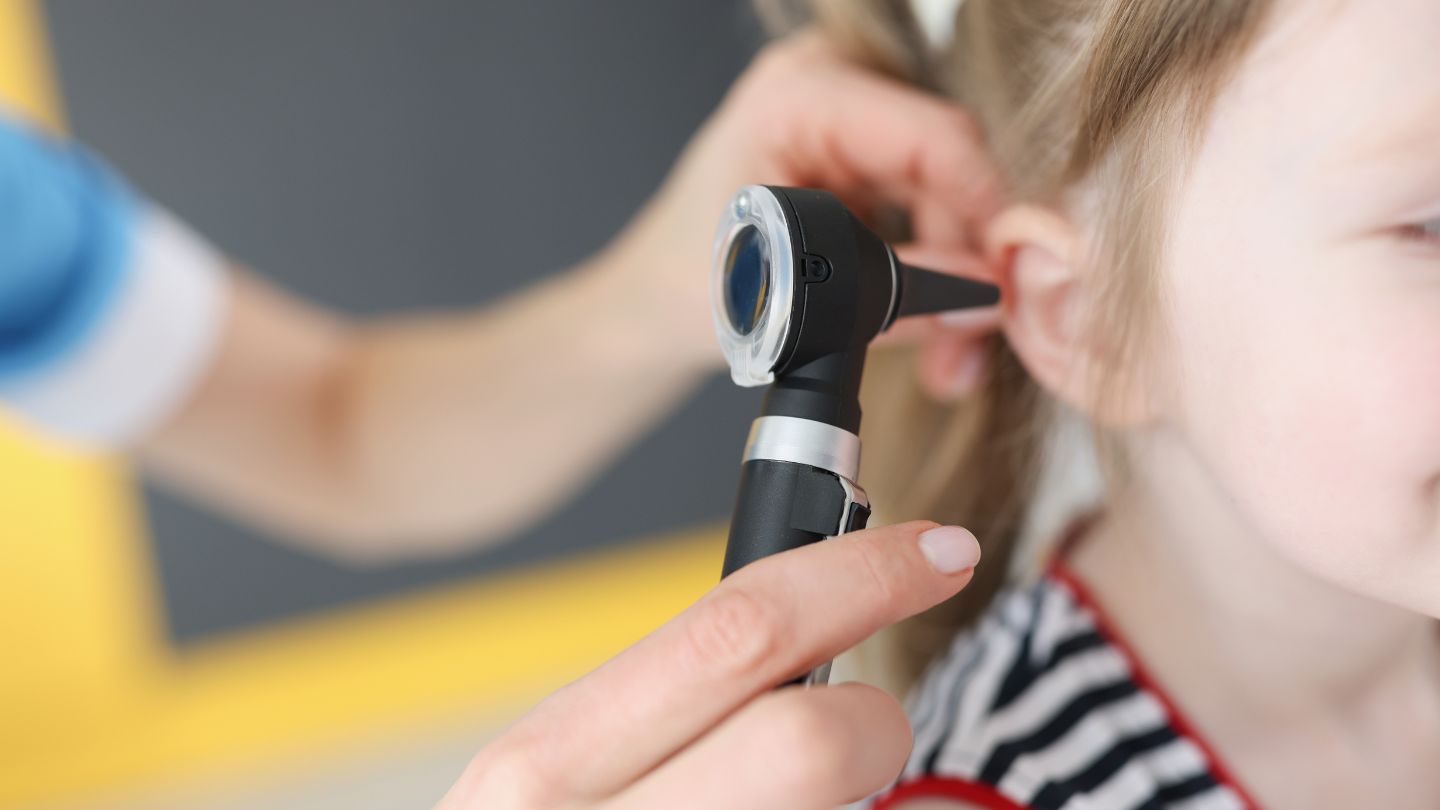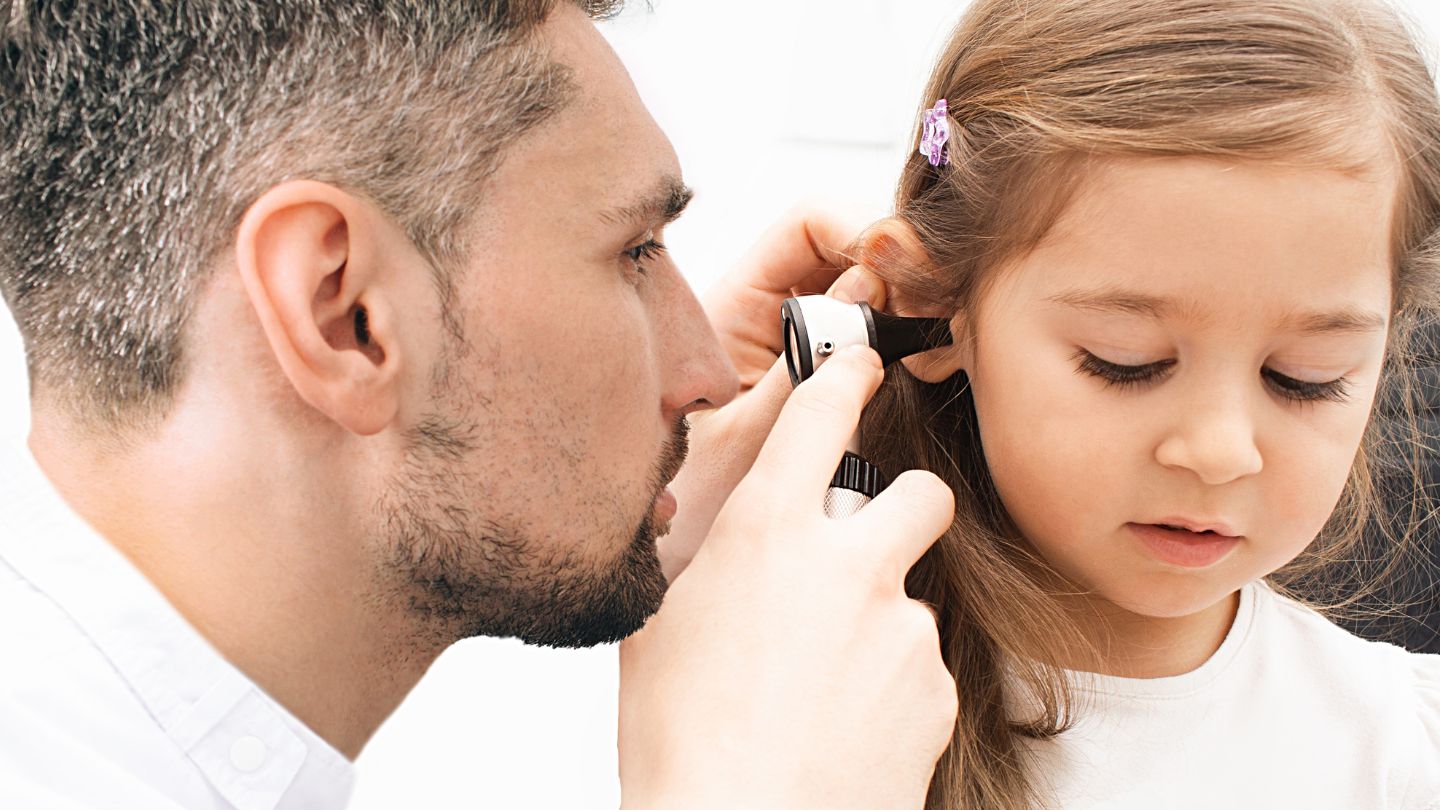Ear tube insertion is a common procedure used to treat frequent or chronic ear infections in children. When other treatments don’t work, this surgery can provide relief and improve your child’s ear health. In this blog, we’ll break down why the procedure might be needed, how it works, and what to expect during and after surgery. Understanding the process can help ease any concerns and prepare you for the next steps. Let’s explore how ear tube insertion can benefit your child’s well-being.
Key Takeaways
- Ear tube insertion is a recommended procedure for children experiencing chronic ear infections, defined as three infections in six months or four in one year, to prevent complications like hearing loss.
- The ear tube insertion procedure is a swift outpatient surgery that allows for ventilation of the middle ear and drainage of fluid, helping to alleviate the frequency of infections.
- Post-surgery care is essential for recovery, including monitoring for drainage and pain management, with follow-up appointments necessary to ensure the ear tubes are functioning properly.
Understanding Ear Infections in Children
Children’s ear infections can have a profound effect on their auditory health and overall development. These infections typically manifest through symptoms such as fever, crankiness, and loss of appetite, posing challenges for both the affected youngsters and their caregivers. The main culprit is often the eustachian tubes in children. These are horizontally aligned and narrower compared to adults’, causing poor air circulation and fluid drainage.
Persistent ear infections—defined as three or more within six months or at least four within a year—are particularly troubling. Known medically as otitis media, these repeated afflictions may lead to serious complications if not managed appropriately. Issues like temporary hearing impairment and balance difficulties due to middle ear fluid accumulation can negatively impact speech acquisition and cognitive growth in children. Frequent middle ear infections, along with conditions such as acute otitis media, contribute significantly to problems including chronic suppurative otitis media—the term ‘middle ear infection’ encompassing any similar issues—and otitis media with effusion, which collectively compound concerns arising from recurrent bouts.
Although most kids eventually grow out of regular occurrences of ear infections thanks to the maturation of their eustachian tubes, some continue experiencing persistent problems into later childhood—a scenario where clinical intervention becomes essential. Ear tube surgery might be necessary for lasting relief in severe cases, signifying that recognizing how crucial it is to address early signs effectively could prevent long-term implications associated with ongoing infections affecting the middle ears of growing children. Understanding the top things to know about ear tube surgery for kids can help parents make informed decisions about managing persistent ear infections effectively.
What Are Ear Tubes?
Ear tubes, known as tympanostomy tubes or myringotomy tubes, are small cylindrical devices that surgeons insert through a tiny hole into the eardrum. These pressure equalization tubes help manage chronic ear infections by facilitating ventilation in the middle ear and aiding fluid drainage to reduce both the frequency and severity of such infections.
There are two varieties of these very small tubes: short-term and long-term. Short-term tympanostomy tubes typically remain in place for about 4 to 18 months before falling out naturally, while long-term ones are made bigger and can stay inserted longer until removed by a medical professional. The particular needs of the child determine which type is used.
Children with recurrent or persistent fluid buildup leading to repeated episodes of infection may need these miniature ventilating devices installed in their ears. By allowing air flow into the middle ear space, they work effectively at balancing changes in air pressure and preventing the accumulation of fluids, addressing core issues linked with persistent ear infections.
When Is Ear Tube Surgery Recommended?
Children who endure persistent or frequent ear infections that fail to improve with standard medical treatments, such as antibiotics, might be candidates for ear tube surgery. Ear tube surgery is often suggested if a child has had three or more ear infections within a six-month period, or when fluid lingers in the middle ear for over three months, leading to hearing loss.
In younger children, especially those under two years old, their eustachian tubes may not have matured sufficiently to drain and ventilate effectively on their own. This can necessitate surgical intervention as an active measure against complications arising from these issues. The determination to move forward with tube surgery hinges upon an exhaustive analysis of the condition of the child’s eardrum, frequency and duration of infections, along with how well they’ve responded to past treatment attempts.
Specialists in pediatric otolaryngology (ENT) undertake meticulous evaluations before recommending this procedure. They weigh factors like its potential impact on auditory capacity, speech progression, and overall quality of life for the child. Such assessments are essential because indications such as continual fluid accumulation inside the ears despite other interventions signal a significant need for surgical action involving inserting an ear tube into the middle ear space.
The Ear Tube Insertion Procedure
Insertion of an ear tube, also known as a tympanostomy, is usually a brief and uncomplicated procedure. Children are instructed to abstain from eating for several hours before the surgery in preparation for being put under general anesthesia. The child receives anesthesia from a pediatric anesthesiologist who ensures that they remain relaxed and free from pain throughout the operation.
Usually conducted at an outpatient surgery center, this surgical process seldom exceeds 15 minutes in duration. During the intervention, the surgeon creates a tiny opening in the eardrum, which facilitates drainage of any fluid trapped within the middle ear space. Subsequently, an ear tube is inserted into this aperture to maintain consistent airflow and prevent additional fluid buildup.
While at the outpatient surgery facility, vigilant monitoring takes place regarding all aspects of your child’s medical history as well as current vital sign readings such as heart rate, blood pressure, and oxygen saturation levels to guarantee their safety during treatment. Post-surgery, most children can be discharged after just a few hours, so they may commence recuperation back home.
Post-Surgery Care and Recovery
Proper post-operative care is essential for a seamless recovery and to guarantee the success of the ear tube insertion. Following surgery, children are typically transferred to a recovery room where they receive careful monitoring. Within 1 to 2 hours after the procedure, most children are able to leave and return home, though they might experience sleepiness and irritability for the remainder of that day.
It’s normal in the initial one or two days post-surgery for some transparent yellow fluid to drain from your child’s ears. This should not be a cause for concern. To alleviate any discomfort or mild ear pain during this period, parents can administer over-the-counter analgesics such as ibuprofen or acetaminophen. Swimming in clean pools doesn’t usually necessitate wearing earplugs, so caution should be exercised so that soap does not enter their ears.
Ensuring you keep up with follow-up visits allows healthcare providers an opportunity to check on how well the ear tubes are functioning and address any issues early on. Should complications occur, like persistent thick drainage or unpleasant odors emanating from their ears, it’s important that caregivers contact their medical professional immediately. With appropriate management following surgery, most youngsters are often ready to resume regular activities within a single day (24 hours).
Benefits of Ear Tubes
Ear tube surgery offers numerous advantages, not just in decreasing the regularity and intensity of ear infections. A primary benefit is the enhancement of hearing that can be hindered by fluid accumulation in the middle ear. This improvement plays a vital role in bolstering speech development and overall communicative abilities, which is particularly important during a child’s formative years. Such progress can be verified through a hearing test.
Inserting ear tubes serves to greatly improve life quality by relieving both pain and discomfort caused by recurring ear infections. Balance issues, which children frequently encounter as part of their struggles with these chronic conditions, often dissipate post-ear tube insertion.
Employing ear tubes can lessen dependence on continuous oral antibiotic treatments, thereby reducing risks associated with antibiotic resistance, along with other potential side effects. Opting for this procedure thus represents for countless families an affirmative action towards guaranteeing their young ones lead healthier lives free from excessive use of antibiotic remedies for the ears.
How Pediatric ENT Specialists Tailor Treatment
Specialists in pediatric ENT (ear, nose, and throat) are adept at crafting tailored treatment plans to suit the specific requirements of each child. They incorporate factors such as the patient’s medical history, intensity of ear infections, and concurrent health conditions into their recommendations for treatment. They select ear tube materials and configurations that align with the child’s developmental stage and age.
Integrating efforts with other members of a healthcare team is frequently a critical component of managing treatments effectively. This inclusive strategy includes addressing issues like speech or learning difficulties that may arise from chronic ear infections. Specialists obtain comprehensive training through completing medical degrees followed by internships in surgery and residencies focused on otolaryngology. Many proceed to engage in subspecialty fellowships dedicated to pediatric otolaryngology.
For effective administration concerning children’s distinctive health needs related to their ears and overall well-being, experience coupled with specialization in pediatric care is crucial. Pediatric ENTs equipped with both skillfulness and empathy can significantly aid both families and children throughout the entirety of their therapeutic journey.
Choosing the Right Pediatric ENT Specialist
It’s essential to choose the appropriate pediatric ENT (ear, nose, and throat) specialist to guarantee your child receives top-tier care. Look for practitioners who are board-certified with specialized training in pediatric otolaryngology. The experience of the specialist in handling pediatric cases and their method of engaging with patients should also be weighed by parents.
The ability of the pediatric ear, nose, and throat doctor to convey treatment options effectively is crucial. They must have the capability to communicate complex information in an accessible manner, both to children and their guardians, while fostering a nurturing environment that facilitates understanding. Other practical aspects, such as the proximity of the clinic location and accommodating office schedules, should also influence your selection process for your little one’s healthcare provider.
In search of a qualified expert, identify those who place a premium on tender-hearted care, much like Pediatric Ear, Nose & Throat specialists at Atlanta do, with commitments rooted in dispensing individualized care strategies aimed at bolstering recovery as well as ensuring patient comfort.
Final Thoughts on Ear Tube Insertion
Ear tube insertion is a highly effective solution for children struggling with chronic ear infections or persistent fluid buildup that impacts their hearing and speech development. By providing proper ventilation to the middle ear, ear tubes help reduce infection risks, improve auditory health, and support better overall well-being. This simple procedure can be a vital step in ensuring your child reaches important developmental milestones without unnecessary setbacks.
At Pediatric Ear, Nose, and Throat of Atlanta, P.C., we specialize in advanced care for ear tubes for kids in Atlanta. Our compassionate team is committed to providing expert guidance and tailored treatment options, whether you’re considering traditional surgery or innovative in-office procedures. If you’re ready to explore options to support your child’s health, we welcome you to schedule a consultation with us today. Together, let’s take the next steps toward their brighter, healthier future.
Frequently Asked Questions
What qualifications should parents look for in a pediatric ENT specialist?
Parents should prioritize finding a board-certified pediatric ENT specialist who has significant experience treating children. This ensures the specialist is well-equipped to address the unique needs of pediatric patients.
How do pediatric ENT specialists tailor treatment for infections?
Pediatric ENT specialists tailor treatment for infections by considering the specific type of infection, which may involve medications, lifestyle adjustments, or minor procedures. This personalized approach ensures that each child’s unique needs are addressed effectively.
Do parents need a referral to see a pediatric ENT specialist?
Parents may need a referral to see a pediatric ENT specialist, depending on their insurance plan. It is essential to check the specific requirements of the insurance provider.
What type of specialists are available at Pediatric Ear, Nose, and Throat of Atlanta?
Pediatric Ear, Nose, and Throat of Atlanta offers board-certified, fellowship-trained pediatric specialists who focus on hearing loss, nasal conditions, and throat concerns.











